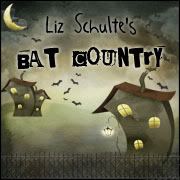Describing your 300 page novel in ten sentences is not for
the weak. Picking and choosing what is important, what will make a reader want
to pick up your book, and what needs to be left out of the blurb (or as the
traditionals call it the jacket copy) is on the very best days daunting—and on
the very worst impossible.
However, it is also necessary.
A good blurb the difference between getting new readers and,
frankly, getting no readers. The cover is your novel’s first impression. Its
job is to make them stop and look at your book. The blurb’s job is to sell the
book. It should be easy to read, enticing, and representative of your writing.
Today just helped two of my friends with blurbs for their
upcoming releases, so I thought why not write a blog post about it to help any
other authors out there who are also working on their book blurbs. To make this
easy and because I love a good list, I am doing this in list form (this is my
blog. I do what I want!)
1. 1. Forget about the entire book and focus on
who is your character at the beginning of the novel. What is he or she like before their whole
world goes to hell.
2. 2. What is your inciting incident? What
happens at the beginning of the book to drive your character into action?
3. 3. Show the rising action. Put in your mind
what your character’s ultimate goal is in the book (ignore the side stories)
and then think about the challenges they had to overcome to reach that goal.
Those challenges are your rising action.
4. 4. What is at stake for the character? If they
fail to make their goal what happens? If nothing happens then you might want to
take another look at your book. There should always be something that drives
the character forward and makes them want that outcome more than anything else.
The above is really all you need to write a good blurb.
These things cover the story and help build interest and tension. However,
there’s more to keep in mind.
1 Details. They are like the Goldilocks of
blurb writing. On one hand you can have too much detail and it will bog down
the blurb and make it hard to read. On the other hand you can have too few
details and the reader will come away knowing nothing about your story. Neither
of which make enticing blurbs. The
simplest way to state this is: you should share the specific events and details
in the book that drive the main plot, but not the names or the subplots.
Example of a blurb without enough detail:
“Emily is driven by one thing: her determination to make up for a pivotal,
crushing mistake. But no matter how hard she tries, she can’t let go of the
past, much less let herself be happy.
Mike’s picture-perfect world has been
shattered. Now he’s struggling to pick up the pieces. Nothing makes sense and
around every corner a landmine from his past destroys any hope of starting
over.
When these two broken souls reach out to
each other for comfort, neither intends for it to go so far, or so deep. Can
they learn to live and love again, even if it’s for just one night?”
It isn’t a bad blurb. The writing is good and it pretty much covers the things
I listed above, but at the end of reading this blurb my only real thought for
what the story is about was, it’s a romance. That isn’t enough to sell it. Let
the reader in. Show them the heart of the book.
Revised blurb:
Emily is driven by one thing: her determination to make up for a youthful,
pivotal mistake. An unplanned pregnancy before she graduated high school
changed the course of her life forever. No matter how hard she works or how
much time she devotes to her son, it will never be enough. Her own happiness is
the furthest thing from her mind.
Mike never planned on being a single
father, but when cancer claimed his beloved wife his picture-perfect life
shattered. A year later he still struggles to pick up the pieces and raise
their daughter though his heart breaks every day. And around each corner
inescapable memories of the love of his life haunt him.
When these two broken souls reach out to
each other for comfort, neither intends for it to go so far, or so deep. Can
they learn to live and love again, even if it’s for just one night?
The difference between these two blurbs is that the first you walk away know something happened in Emily’s life, but you have no idea what. That makes Emily nothing more than a name on a page. In the second example, you are starting to get to know Emily. You understand her a little better and maybe you can relate to her. Lo and behold you actually want to know if these two people can love again.
2.
Cliches. If you read it once, you’ve read is a
thousand times (totally did that on purpose), avoid clichés. I know it’s hard
and I don’t always succeed either, but damn it, you have to try. The thing is
when you write a blurb the length is so restricted that is honestly makes very
little sense to include something that is basically a throw away. These are
words that in no way will resonate with a reader and will not set apart your
book. Yes, they are easy and so readily available, but they aren’t helping you.
3.
Ending with questions. I can honestly say I am
not a fan. Occasionally a blurb will pull it off, but mostly, I recommend
avoiding the use. The ending question has been done so many times it has become
a cliché blurb writing technique. Instead of leaving a reader like that, take
the extra time and think of a great last line that will stick with them. Just
like your novels, the first and the last line are the most important.
4.
Make it easy. The more complicated your blurb is
the less likely people will read it to the end. If you start throwing out super
long sentences, big words, tons of details, people are going to lose track of
what you are saying and give up. A blurb should be short and simple. Something
a person can read at a glance and know if this is the book for them.
5.
Demonstrate what your book is by the writing in
your blurb. You shouldn’t have to tell someone your book is a mystery or a
comedy or a romance. You should be showing it in what you are writing. If you
have written a comedy then your blurb should be funny (good luck with that).
6.
Ask for help.
This is my final piece of advice. Blurb writing is hard—really really
hard. You will never write as good of a blurb alone as you will with the help
of others. You see the problem is you already know intimately every detail of
your story, therefore your opinion is shit. You can’t see the places that the
reader will be like “Whaaaatttt?” So get help. Ask your author friends to read
it and tell you what they think. No, you don't have to take everyone’s advice, but if
several people are bothered by the same thing, then you should seriously think
about it.
If you have one friend who is really good at writing blurbs then I would suggest asking them what time would be good for them to help you, then set aside like thirty minutes with that person to go over it. That way you can be there to answer questions and go back and forth with them. Do not just send them your blurb and expect they can work on it immediately. Be respectful of their time because they are doing you a favor.
Personally when I work on a blurb for someone it can take me anywhere from 30 minutes to a couple hours depending about how responsive the other person is.
If you have one friend who is really good at writing blurbs then I would suggest asking them what time would be good for them to help you, then set aside like thirty minutes with that person to go over it. That way you can be there to answer questions and go back and forth with them. Do not just send them your blurb and expect they can work on it immediately. Be respectful of their time because they are doing you a favor.
Personally when I work on a blurb for someone it can take me anywhere from 30 minutes to a couple hours depending about how responsive the other person is.
Anyway, that’s what I know. I hope this helps. I have spent so much time writing this post I
am not going to proofread it, so you will have to deal the typos. :-D
-Liz

















1 comment:
Hate writing blurbs so this was a huge help!
Post a Comment